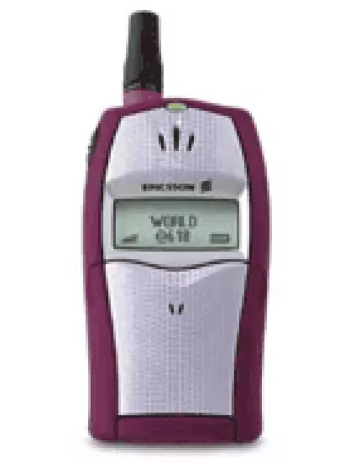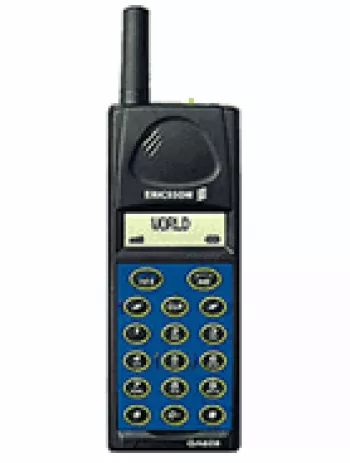
Introduction to Ericsson R380
The Ericsson R380 was a groundbreaking device in the mobile phone industry, marking a significant step toward the smartphones we know today. Launched in 2000, it was among the first devices to combine features of a mobile phone with those of a personal digital assistant (PDA), setting a precedent for future smart devices. Its release showcased the potential of integrating various digital tools into one handheld device, even though it was released as a feature phone.
Design and Build
The Ericsson R380 had a distinctive and somewhat bulky design compared to today's smartphones, with dimensions of 130 x 50 x 26 mm and a weight of 164 grams. This made it relatively large and heavy, yet it was considered compact at the time. The device featured a monochrome resistive touchscreen, a pioneering technology at the time, allowing for basic touch interactions. The R380 supported a Mini-SIM and had a flip design which protected the screen and gave it a unique aesthetic.
Display
The monochrome resistive touchscreen was a novel feature for the Ericsson R380, highlighting its innovation. Although the screen size is unspecified, it was larger than those found on standard mobile phones of that era, facilitating unique applications like a WAP browser and an advanced phonebook system. The resolution was ‘big’ for its time, aimed at enhancing usability for messaging and other PDA functions.
Networking and Communication
The Ericsson R380 operated on GSM technology, specifically supporting GSM 900 and 1800 bands. It did not feature GPRS or EDGE capabilities, which meant data connectivity was limited. Networking advances in later models eventually included these technologies, but the absence of them in the R380 required users to rely mainly on cellular voice communication and SMS messaging.
Features and Functionalities
Functionally, the Ericsson R380 broke new ground with its feature set. It included basic messaging capabilities like SMS and Email, a WAP browser for basic internet usage, and additional utilities such as a clock and alarm functionalities. The device also facilitated basic gaming experiences and was equipped with an infrared port for data transfer, though lacking in Bluetooth, WLAN, and USB capabilities.
Memory and Storage
In terms of memory, the Ericsson R380 had no card slot for expandable storage, which was typical for phones of that era. It included a phonebook capable of storing up to 99 entries and provided advanced call record features, offering business users a practical solution for managing contacts and call history.
Battery Life
The Ericsson R380 was powered by a removable NiMH battery, offering a standby time of up to 150 hours and a talk time of approximately 4 hours. While these specifications seem limited today, they were quite reasonable at the time of its release, as prolonged battery life was a critical requirement for mobile users.
Sound and Alerts
Sound capabilities were basic but functional, with the device supporting vibration and monophonic ringtones. It did not include a loudspeaker or a 3.5mm headphone jack, which restricted audio output options. However, these features became standard in subsequent mobile device models as user expectations evolved.
Software and Operating System
The Ericsson R380 operated as a feature phone but carried functionalities that resembled those of PDAs. Although it didn’t support Java, it had a robust enough system to run applications necessary for personal and business productivity. The device represented a hybrid that began bridging the gap between simple mobile phones and multifunctional smartphones.
Conclusion
The Ericsson R380 stands as a milestone in mobile phone history, providing insights into the early stages of smartphone development. Although it lacked some critical features that are now considered essential, it paved the way for future advancements by demonstrating the potential of integrating communication and computing functionality. The R380’s innovative design and capabilities marked the beginning of a technological revolution that would profoundly change how we communicate and manage information in the digital age.
Main Features of Ericsson R380
- GSM Technology with support for GSM 900 / 1800 bands
- Compact dimensions: 130 x 50 x 26 mm
- Monochrome resistive touchscreen with large resolution
- Advanced call records management
- Infrared port for connectivity
- SMS and Email messaging capability
- WAP browser for internet access
- Removable NiMH battery with 150 hours standby time and 4 hours talk time
- Includes essential features such as clock, alarm, and games
Ericsson R380 Drawbacks
- Lack of GPRS and EDGE support, limiting internet connectivity.
- Discontinued status, resulting in lack of support and updates.
- Heavy weight of 164 grams, making it less portable.
- Monochrome resistive touchscreen, providing limited display capabilities.
- No expandable memory card slot, restricting storage capacity.
- No built-in camera.
- Absence of a loudspeaker and 3.5mm audio jack for sound output.
- No WLAN and Bluetooth connectivity options.
- Lack of positioning (GPS) features.
- No FM radio functionality.
- Limited browser capability with only WAP support.
- Absence of Java support for third-party applications.
- Short battery life, with only 150 hours standby and 4 hours talk time.




View Also
More Phones
All Rights Reserved +14266 Phones © Mobilawy 2025
























